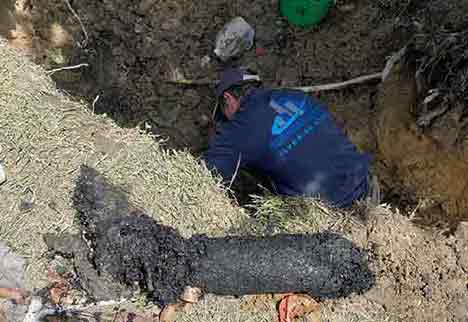
There are a lot of things that go on the grounds outside your home. Along with the earthworms and occasional rodents digging in the earth, you have sewer lines buried within the property grounds, as well as tree and plant roots crisscrossing the length and breadth of your yard.
Most of the time, tree roots and underground sewer lines stay separate. But sometimes tree roots will wind their way through the soil to where your sewer lines are located. Most of the time when this happens, there are no adverse consequences.
Other times, however, encounters between tree roots and the sewer lines can have disastrous effects on your home, warns KRS Property Management. If the tree roots find a way to pierce the sewer line and work their way into the pipe, they can destroy your home’s sewer line.
Tree roots do this for a simple reason. Sewer lines carry gray water and sewage from your home to the municipal sewer system. The contents of sewer lines are packed with nutrients that the trees in your yard want to get their roots into.
If for any reason the sewer line leaks – even a hairline crack – or weak spots and joints, this can cause massive problems. The contents of the pipes will start to seep into the surrounding soil and attract the attention of tree roots in the ground.
The result is that roots will wend their way to the pipe and ultimately discover the crack in your sewer line. The tree will grow microscopic fibers into this crack and once those are established, they will force the small opening to expand.
In time, that crack will widen to admit more tree roots and your sewer line will be blocked and damaged. You will only realize what has been happening in the ground beneath your yard when you start to see signs of the problem inside your home.
Signs of tree root intrusion in your sewer lines
Clogged drains
These are not the kind of clogs you can remove by using a drain snake or liquid drain cleaner. These types of clogs are persistent because the root cause of the problem is deep inside your sewer system.
Foul odors
You may notice the persistent smell of sewage or other bad odors around your yard. The foul odor may also be present inside your home and is often stronger whenever you flush the toilet or use the shower.
Wet spots in the yard
Another sign that your sewer line is damaged is when you start to see wastewater puddles in the yard. These are areas that are wetter than the rest of the yard; they will stay wet even when there has been no rainfall.
Excessively green areas on the lawn
The marked disparity in the lushness of one part of your lawn compared to the other parts, when the difference is not the result of how you water your lawn, may be due to a sewer line damaged by tree root incursion.
How to fix tree root damage to sewer lines
The first step in solving the problem is to get a professional plumber to camera inspect your sewer lines. The most effective way to determine the location and extent of the problem is by a sewer camera inspection. This can help you locate the problem with pinpoint accuracy.
After the problem is detected and evaluated, one of the following solutions may be applied:
Chemical treatment
Special chemicals are pumped into the sewer to kill the tree roots. This is a temporary fix that doesn’t address the real cause of the problem. Moreover, it could kill your tree and other plants in the yard.
Sewer rodding
A mechanical auger called sewer rodding is inserted into the sewer lines and used to cut and remove the tree roots. This must be done repeatedly since it does not fix the damage to the sewer line and tree roots can always grow back.
Hydro jetting
Hydro jetting uses high-pressure water to blast away blockages inside the sewer lines, even as far as shearing away tree roots. This method is often combined with chemical treatment and works best for younger growths.
Sewer line replacement
This is a long-term solution and the best way to deal with tree root intrusion in sewer lines. There are two methods for replacing sewer lines; the trenchless method which does not require excavation and the sewer line repair method that requires excavation.
Using the trenchless method will cost you less because excavations can be expensive and very disruptive. When you excavate the yard, in addition to the cost of digging a trench in the ground and replacing the sewer pipes, you also have to repair your damaged landscaping.
Sewer line repairs that require excavations should only be used when replacing an entire sewer line. For other kinds of repairs, trenchless sewer repair is recommended. There are two kinds of trenchless sewer repair: pipe bursting and pipe lining.
To determine which solution is the best fit for your sewer line problems you need a plumbing expert to do a thorough assessment of the sewer systems. Note that sewer line issues should be dealt with immediately to prevent damage to municipal sewer lines.

